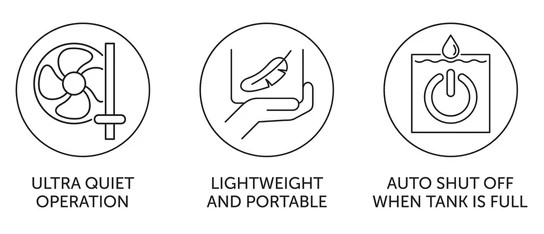
- The Rise of Electric Vehicles
- Environmental Benefits
- Reduced Running Costs
- Low Maintenance Needs
- Quiet and Smooth Operation
- Energy Efficiency
- Range Anxiety
- Charging Infrastructure
- Initial Purchase Cost
- Battery Replacement Issues
- Limited Model Availability
- Conclusion and Recommendations
The Rise of Electric Vehicles
Electric Vehicles (EVs) have become a significant innovation of the 21st century. They are changing our views on mobility, sustainability, and energy use. As concerns about climate change grow and fossil fuel supplies shrink, countries and consumers are looking for cleaner, more efficient alternatives to traditional cars that run on internal combustion engines (ICE). EVs, which are powered by electric motors and rechargeable batteries, can reduce pollution, improve energy efficiency, and lessen dependence on imported oil. The growth of EVs is not by chance; it results from years of technological progress, government support, and public demand for greener transportation. Over the last decade, battery costs have decreased by more than 80%. Charging stations are being set up around the world, and car manufacturers are investing heavily in Electric vehicle cost comparison. In India, the FAME (Faster Adoption and Manufacturing of Hybrid and Electric vehicles (EVs) scheme is helping speed up the move toward electric mobility, with a goal of 30% EV adoption by 2030. Despite their potential, EVs face several challenges. High upfront costs, limited driving range, and insufficient charging networks can discourage buyers. This analysis examines both the advantages and disadvantages of Electric vehicles (EVs), offering a complete view of their Artificial Intelligence Training impact on the future of transportation.
Ready to Get Certified in Artificial Intelligence ? Explore the Program Now Artificial Intelligence Online Training Offered By ACTE Right Now!
Environmental Benefits
One of the most convincing reasons to choose EVs is their environmental benefits. Unlike ICE vehicles that burn fossil fuels and release harmful pollutants like carbon dioxide (CO₂), nitrogen oxides (NOx), and particulate matter, electric vehicles have no tailpipe emissions. This helps to improve air quality and reduce urban smog, which is especially important in crowded cities like Delhi, Mumbai, and Bengaluru, where vehicle emissions greatly contribute to air pollution.
- Zero Emissions: EVs produce no tailpipe pollutants, improving air quality and reducing urban smog.
- Renewable Charging: When powered by solar or wind, EVs emit up to 70% less CO₂ over their lifetime.
- Noise Reduction: Lack of engine noise lowers noise pollution, enhancing urban living conditions.
- Grid Dependency: Environmental impact varies based on electricity source—coal-based grids shift emissions upstream.
- Greener Future: As power grids adopt cleaner energy, EVs become increasingly sustainable and eco-friendly.
Reduced Running Costs
EVs can lead to significant Electric vehicle cost comparison savings over their lifetimes compared to traditional vehicles. Charging an EV is much cheaper than refueling a petrol or diesel vehicle, typically costing around ₹1–2 per kilometer in India, compared to ₹6–8 per kilometer for petrol cars. This cost advantage is especially high for those with long daily commutes or for businesses like taxis and delivery services.
- Fuel Savings: EV charging costs are significantly lower than petrol or diesel refueling, especially for high-mileage users.
- Government Incentives: Includes road tax exemptions, reduced registration fees, and subsidized public charging.
- State-Level Support: Some Indian states offer toll exemptions and financial aid for home Electric vehicle charging infrastructure.
- Off-Peak Pricing: Charging during low-rate hours further reduces electricity costs for EV owners.
- Total Electric vehicle cost comparison Advantage: Combined savings often offset the higher upfront cost, lowering overall ownership expenses.
Low Maintenance Needs
EVs have fewer mechanical parts than internal combustion vehicles, making them simpler to maintain. They do not need oil changes, transmission upkeep, or exhaust system repairs. Their electric motors have far fewer moving parts, which leads to less wear and longer service intervals. Typically, the only regular Electric vehicle maintenance cost needed is for tires, brake fluid, and cabin filters.
- Reduced Maintenance: No oil changes, transmission servicing, or exhaust repairs required.
- Regenerative Braking: Converts kinetic energy into electricity, reducing brake wear and servicing costs.
- Fleet Advantage: Lower Electric vehicle maintenance cost needs improve uptime and reduce operational expenses for commercial operators.
- Software Diagnostics: Onboard sensors detect issues and enable over-the-air updates for performance enhancement.
- Tech Shift: Represents a major evolution in vehicle monitoring and Electric vehicle maintenance cost strategy.
Quiet and Smooth Operation
Electric vehicles are known for their quiet operation. Without an internal combustion engine, EVs run nearly silently, creating a peaceful driving experience. This quietness is particularly appreciated in busy city traffic and residential areas where noise pollution is a concern.

- Instant Torque: Electric motors deliver quick acceleration without gear shifts or delay.
- Smooth Handling: EV propulsion ensures a comfortable and responsive driving experience.
- Urban Advantage: Quiet operation enhances comfort in traffic-heavy and residential zones.
- Luxury Appeal: Smooth acceleration and silent running make EVs ideal for premium travel.
- Pedestrian Safety: Acoustic Vehicle Alerting Systems (AVAS) emit sounds at low speeds to prevent accidents.
Energy Efficiency
EVs are naturally more energy-efficient than their fossil-fueled counterparts. Internal combustion engines convert about 20% of fuel energy into motion, while electric drivetrains can convert over 85% of electrical energy into power at the wheels. This impressive efficiency minimizes energy waste and maximizes output.
- High Conversion Efficiency: EV drivetrains convert over 85% of electrical energy into motion, compared to 20% for ICEs.
- Regenerative Recovery: Captures braking energy and stores it in the battery, extending range and reducing waste.
- Sustainability Boost: Enhanced energy use efficiency supports cleaner transportation and lower emissions.
- Oil Demand Reduction: Less reliance on imported oil helps stabilize national economies.
- Energy Security: Electric mobility supports long-term independence from volatile global fuel markets.
Range Anxiety
Range anxiety remains one of the most significant psychological barriers to EV adoption. Earlier Electric vehicle cost comparison had ranges of less than 150 kilometers, which limited their usability to short trips. However, advancements in Battery life technology, such as lithium iron phosphate (LFP) and solid-state batteries, have vastly improved vehicle ranges. Many current EVs can now travel 400–600 kilometers on a single charge, meeting the daily driving needs of most consumers.
- Navigation Support: Real-time apps help locate charging stations and estimate range, reducing uncertainty.
- Fast-Charging Expansion: Companies like Tata Power, Ather Energy, and Statiq are building nationwide networks in India.
- Battery life Innovation: LFP and solid-state technologies enable longer ranges and better energy density.
- Rural Challenge: Electric vehicle charging infrastructure remains sparse in remote areas, limiting EV adoption.
- Electric vehicle charging infrastructure Need: Widespread development and public awareness are key to overcoming range anxiety.
Charging Infrastructure
The growth of EV usage is closely linked to the development of a reliable charging network. Currently, there are three levels of Electric vehicle charging infrastructure:
- Level 1 Charging: Uses a standard 120V or 230V household outlet. Slowest option, ideal for overnight home charging.
- Level 2 Charging: Operates on a 240V system, replenishing a vehicle in 4–8 hours. Common in homes, workplaces, and public areas.
- DC Fast Charging (Level 3): Supplies high-voltage direct current to charge vehicles up to 80% in under an hour. Suitable for highways and fleets.
- Government Support: FAME-II and NEMMP schemes promote public Electric vehicle charging infrastructure across India.
- Private Innovation: Battery-swapping networks and mobile charging services improve accessibility.
- Future Technologies: Solar chargers, wireless pads, and V2G systems promise smarter, greener EV charging.
- Total Cost of Ownership: Fuel savings, tax incentives, and lower maintenance often make EVs more economical over time.
- Indian Incentives: FAME scheme, state subsidies, 5% GST, and green financing improve affordability.
- Manufacturing Push: Local battery production under the PLI scheme will help reduce costs further.
- Price Parity Outlook: EVs and ICE vehicles are expected to reach similar pricing in the coming years.
- Replacement Cost: Battery replacement can cost ₹3–5 lakh depending on the vehicle model.
- Modular Solutions: Manufacturers are developing partial replacement systems to reduce Electric vehicle cost comparison and complexity.
- Battery life Leasing: Programs offer flexible ownership models to ease financial burden.
- Second-Life Applications: Used batteries are repurposed for home energy storage systems.
- Recycling Progress: Facilities are recovering lithium, nickel, and cobalt to support circular battery ecosystems.
- Limited Variety: Affordable and utility-focused EVs are less available compared to traditional fuel vehicles.
- Urban Bias: Most Indian EVs target premium or city-based consumers, leaving gaps in rural and fleet segments.
- Expanding Lineups: Tata Motors, Mahindra, and Hyundai are increasing their EV offerings across categories.
- New Entrants: Ola Electric and BYD are introducing diverse models to meet broader market needs.
- Global Interest: Tesla, Volkswagen, and Toyota are exploring the Indian market, promising more choices soon.
Looking to Master Machine Learning? Discover the Artificial Intelligence Expert Masters Program Training Course Available at ACTE Now!
Initial Purchase Cost
A significant drawback of EVs is their high initial price. The main factor is the cost of lithium-ion battery packs, which make up about 30–40% of a vehicle’s total cost. While battery prices have dropped significantly from over $1,000 per kWh in 2010 to below $150 per kWh today they still make EVs more expensive than gas-powered models.

Battery Replacement Issues
The longevity of batteries and their replacement costs impact consumer confidence. EV batteries generally last 8–10 years, retaining about 70–80% of their original capacity by the end of their life. Manufacturers usually offer long warranties up to 160,000 kilometers or eight years to provide assurance to buyers.
Preparing for Artificial Intelligence Job Interviews? Have a Look at Our Blog on Artificial Intelligence Interview Questions and Answers To Ace Your Interview!
Limited Model Availability
Despite the rapid growth of the global EV market, the variety of models available in certain regions and price brackets is still limited. Consumers looking for affordable or utility-focused EVs often find fewer options than for petrol or diesel cars. In India, most current EV models are aimed at premium or urban commuter markets, with Artificial Intelligence Training and fewer choices for rural drivers or commercial fleets.
Conclusion and Recommendations
Electric vehicles represent a significant change in transportation. They provide Artificial Intelligence Training for clean, efficient, and innovative mobility. The benefits, including environmental impacts, Electric vehicle cost comparison savings, quiet operation, and energy efficiency, highlight their potential for the long term. However, challenges like high initial costs, range anxiety, and limited infrastructure should not be overlooked.



